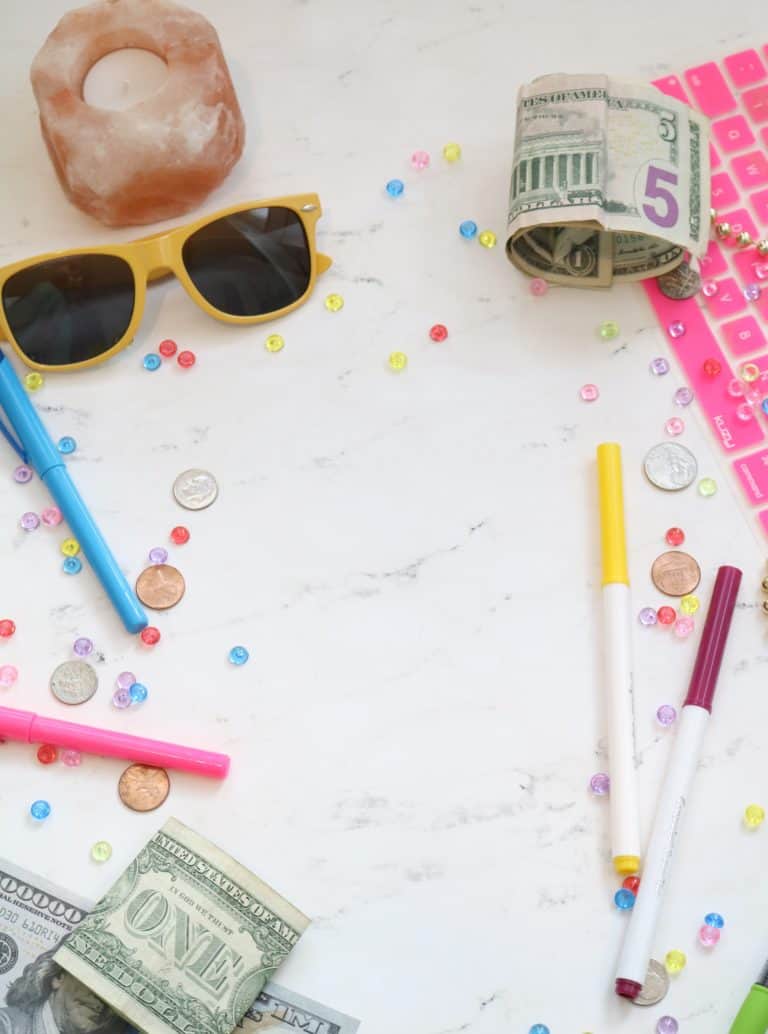Today, I am going to tell you about how one elementary school teacher built up her emergency fund from $0 to $15,000.
In only 6 months.
She accomplished this in spite of:
Not knowing where to start..
Knowing very little about money & felt like she was always strapped for cash.
Want to know how she did it?
Read on.

Meet Ashley...
A 29 year old 2nd grade teacher who just got married.
Ashley and her husband were excited to start a family but she was concerned that they didn’t have a large enough emergency fund built up.

They had paid off all of their debt but was nowhere even close to having 6-9 months of expenses saved up. Something she knew they needed before they took the next step.
In order to start their lives together they wanted to be financially responsible but they didn’t know where to start.
Like many busy teachers, Ashley loved her job..
But somehow, come month end, there was very rarely money in her account to pay for gas, let alone save.
Ashley knew something needed to change-
She was tired of living paycheck to paycheck.

Here’s the problem-
But after long days of teaching and planning all day, she couldn’t imagine having a second job to go to afterwards.
Then after one exhausting day, she came out of her classroom to find her car had a flat tire.
A flat tire and no money to fix it.

Frustrated and embarrassed, she called her sister to ask for a lift home.
On the ride home, Ashley’s sister told her about my story.
After getting in touch with me, I had to help her.
Here’s what happened after following my advice..
After only one month, here’s how her life was changed:
- Her and her husband had saved $1,500
- They had found more joy in their life by paying more attention to what brought happiness to them
- She felt less tired and more accomplished in her classroom
Ready to take some notes?
Here’s the exact framework I had her follow:
Step 1- Determine Your Priorities
Everyone has “their thing” when it comes to spending money.
The first major step to being able to achieve your emergency fund goal is to set your priorities on what you will spend money on and what you can skip- this is creating your budget.
It is important to remember that budgets are not meant to be a horrible tedious task. Budgets are meant to give you a plan for what you want to spend your money on.

It is perfectly fine to budget for biweekly manicures or a haircut every six weeks. People often think of budgets as only being able to pay bills and then sit at home.
That is not the point of a budget.
The point of a budget is to have a plan for your money.
In order to have a successful plan for your money, you need to know exactly what you are spending it on.
Step 2- Set Your Goals
Goal setting is my favorite way to help keep on track.
It is an important skill that I teach to my students. Each quarter, I help them set a goal.
When you determine your ultimate goal, you need to write it down.
Doing this simple step sets you up to being 42% more likely to achieve your goal.

Next, I have them determine four mini goals that will help them reach their ultimate goal.
I like to compare goal setting to running.

You don’t just wake up and go run 10 miles at one time. It is a build up- you start at one mile and work your way up.
A goal (say save $15,000) should be the same way.
Regardless of student or adult, determine a starting point.
You need to start with the end goal in mind and then work your way backward.
For example, Ashley wanted to come up with six months of emergency money.
She knew she would need about $15,000 to make ends meet for roughly 6 months.
Her goal with her husband was to save $4,000 every two months.
Step 3- Create An Action Plan
When you set goals, it is one thing to identify what you need to do.
It is something completely different to put that plan into place.
Start with small manageable goals that you can accomplish easily.
If your goal is to save up for an emergency fund like Ashley did, maybe you could find an extra $100 a month in your budget to put toward your goal.

Maybe there are some other ways you can help supplement your income without exhausting yourself and resources.
The hardest part of anything new is starting. I often find the beginning of a new goal the most challenging but then once I get into the routine, I can feel my momentum start to pick up and that is the best feeling ever.
To help Ashley along in her journey, she decided to start teaching her students about goal setting, She decided that if she was going to be her best self, then she needed to implement this practice into all areas of her life. She uses this simple diagram to help her students stay organized and on track toward their goals.
That’s All There Is To It.
That is how Ashley saved $15,000 for her family’s emergency fund in only 6 months.
The best part is, you can get the same results that Ashley got by following these same exact step by step process.
If you found this story inspiring, please leave a comment below, I’d also like to hear from you.
What strategies have you used to accomplish your goals?

